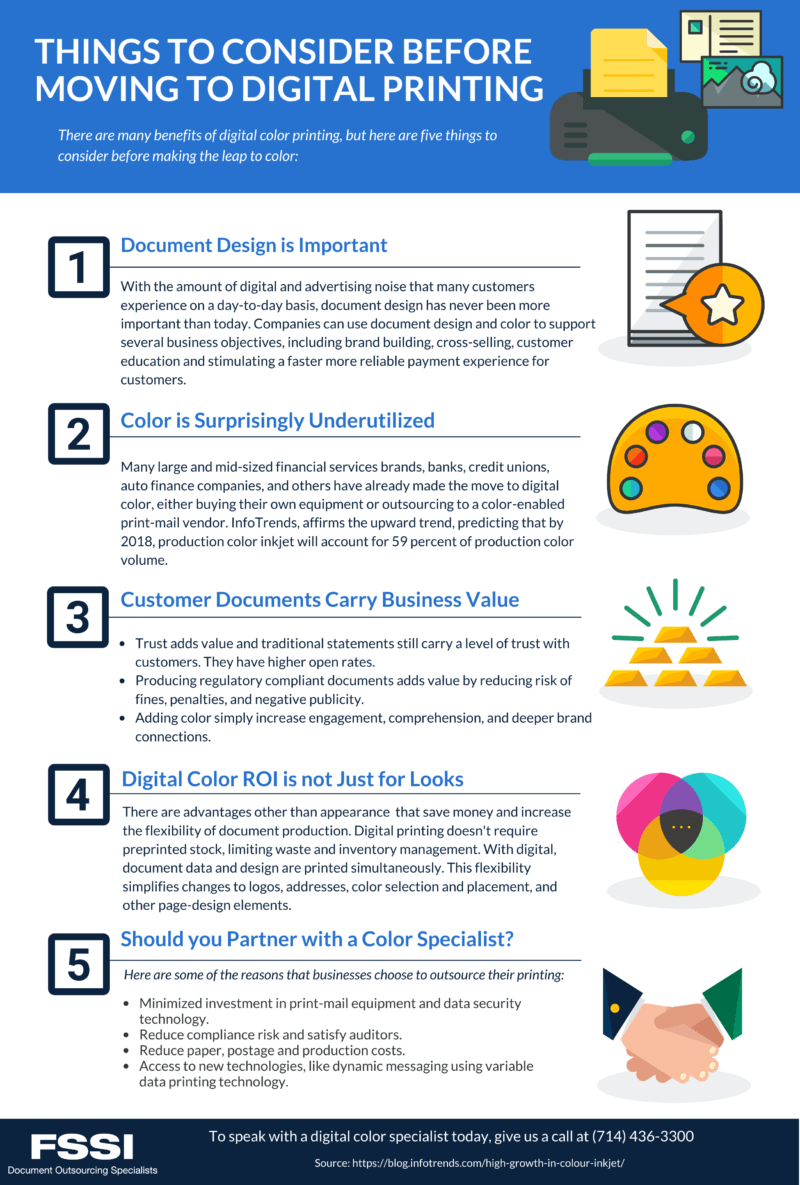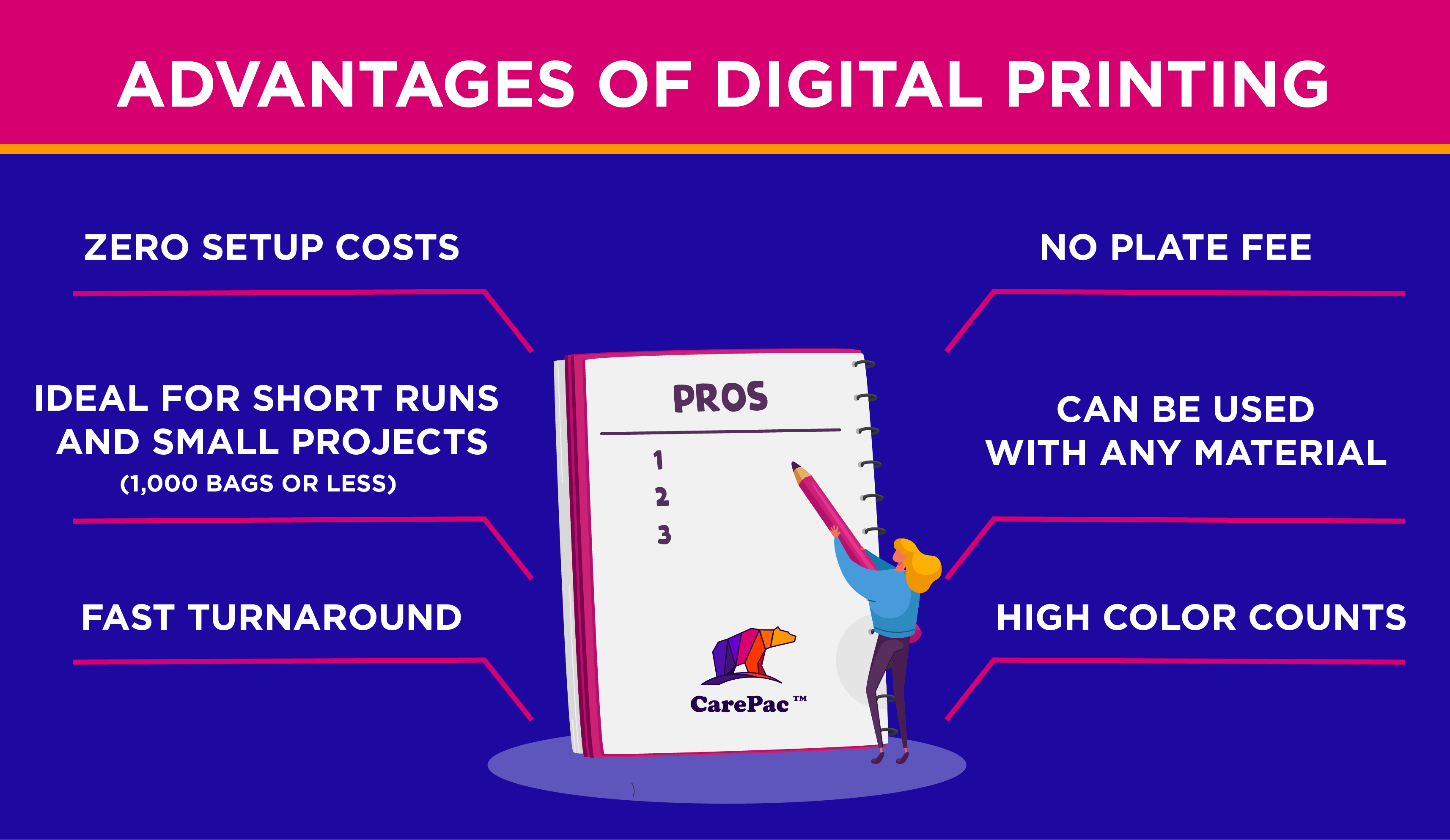The 15-Second Trick For Digital Printing
The 15-Second Trick For Digital Printing
Blog Article
Our Digital Printing Statements
Table of ContentsAll about Digital Printing3 Simple Techniques For Digital PrintingMore About Digital PrintingThe 30-Second Trick For Digital PrintingHow Digital Printing can Save You Time, Stress, and Money.3 Easy Facts About Digital Printing Described
Variable data printing, such as straight mail with personalized codes and addresses, is ideally suited for electronic printing. Digital fast printing just needs four steps of layout, review, printing and binding to obtain everything done. Digital fast printing has an unmatched advantage: print on need.According to PMMI, digital printing permits brands and manufacturers to react rapidly to customer needs while enhancing the supply chain, lowering warehousing price and waste, and delighting in faster time to market. That all sounds terrific, yet exactly how does this technology do all that? The significant differentiator of these modern technologies is that there are no set up fees and no plates with digital printing.
Some Ideas on Digital Printing You Need To Know
According to Wikipedia, the biggest difference in between digital printing and conventional methods such as lithography, flexography, gravure, or letterpress - Digital Printing is that there is no requirement to replace printing plates in digital printing, whereas in these analog printing techniques the plates are repetitively changed. This leads to quicker turn-around time and reduces expense when utilizing digital printing.
Digital printing is very adaptable, so it's very easy to make changes to the package design promptly. It all goes back to the plates.
Much more inventory can indicate more waste in the future. With traditional printing approaches, short-run printing is just not possible. Due to the fact that a fantastic layout can make or break your product, electronic printing constantly develops top notch, clear and vibrant graphics each time. Digital printing on adaptable bags adds the bright, vivid, and specific graphics that almost beckon consumers to reach out and touch them.
Digital printing is the procedure of printing digital-based photos directly onto a range of media substrates. There is no need for a printing plate, unlike with offset printing. Digital files such as PDFs or desktop computer posting documents can be sent directly to the digital printing press to publish on paper, photo paper, canvas, textile, synthetics, cardstock and various other substrates.
The Facts About Digital Printing Revealed
According to PMMI, digital printing permits brand names and suppliers to respond promptly to client needs while boosting the supply chain, lowering warehousing expense and waste, and appreciating faster time to market. That all noises wonderful, but just how does this technology do all that? The major differentiator of these technologies is that there are no set-up fees and no plates with digital printing.
According to Wikipedia, the best difference in between electronic printing and standard approaches such as lithography, flexography, gravure, or letterpress is that there is no demand to replace printing plates in electronic printing, whereas in these analog printing techniques the plates are consistently replaced. This results in quicker turnaround time and reduces expense when utilizing electronic printing.

Some Known Details About Digital Printing
A lot more supply can indicate even more waste later on. With traditional printing approaches, short-run printing is just not possible. Since a wonderful design can make or break your product, digital printing continually develops top quality, clear and vivid graphics each time. Digital printing on versatile bags adds the intense, vibrant, and exact graphics that almost bid customers to get to out and touch them.

According to PMMI, digital printing enables brand names and makers to react swiftly to client demands while boosting the supply chain, reducing warehousing expense and waste, and appreciating faster time to market. That all noises terrific, yet just how does this technology do all that? The major differentiator of these innovations is that there are no set-up fees and no plates with digital printing.
Not known Facts About Digital Printing
According to Wikipedia, the best difference in between electronic printing and typical approaches such as lithography, flexography, gravure, or letterpress is that there is no need to replace printing plates in digital printing, whereas in these analog printing methods the plates are repetitively replaced. This causes quicker turn-around time and lowers cost when making use of digital printing.
Quick manufacturing implies getting your item to market quicker. It likewise implies it's easier and faster to make adjustments in the future, when you transform a recipe, add a SKU, or develop seasonal product packaging. Digital printing is very flexible, so it's easy to make modifications to the package layout promptly. It all goes back to home plates.

Digital Printing Things To Know Before You Buy
Digital printing is the process of printing digital-based photos straight onto a range of media substratums. There is no demand for a printing plate, unlike with countered printing. Digital documents such as PDFs or desktop publishing data can be sent out straight to the digital printing machine to print on paper, photo paper, canvas, textile, synthetics, cardstock and other substratums.
Report this page